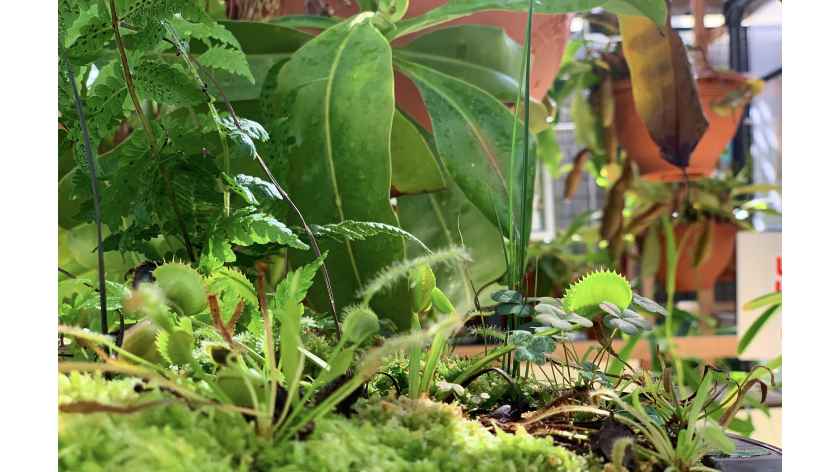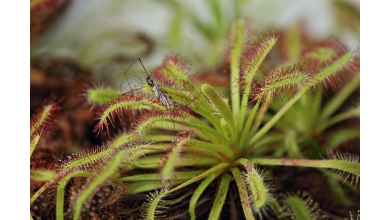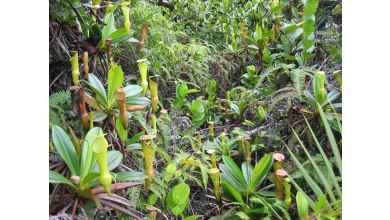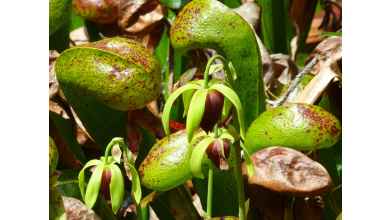Types of Carnivorous Plants

Plants are known to be peaceful, gentle, and beneficial for our environment. However, some of them are not as innocent as we think. In fact, some of them are predators, feeding on insects and other small animals. These are the carnivorous plants, and there are various types of them. In this article, we will explore the different types of carnivorous plants and learn about their unique adaptations.
Introduction
Carnivorous plants are plants that have adapted to grow in areas where the soil is nutrient-deficient. To compensate for this, they have evolved to capture and digest insects and other small animals to obtain the nutrients they need. There are more than 600 species of carnivorous plants, each with its unique adaptations to trap and consume prey.
Venus Flytrap
The Venus Flytrap is perhaps the most well-known carnivorous plant. It is native to the southeastern United States and has leaves that are modified to trap insects. The traps work by having tiny hairs inside that, when triggered by an insect, cause the trap to snap shut, trapping the prey inside. The plant then secretes digestive enzymes that break down the insect, allowing the plant to absorb the nutrients.
Pitcher Plants
Pitcher plants are another type of carnivorous plant that is commonly found in wetlands and bogs. They have leaves that are modified to form a deep cavity, which is filled with digestive enzymes. The cavity is covered with a lid that has translucent patches to lure insects inside. Once inside, the insects become trapped in the digestive enzymes, and their nutrients are absorbed by the plant.
Sundews
Sundews are carnivorous plants that are found all over the world, including North America, Europe, and Australia. They have leaves that are covered in sticky, glandular hairs that trap insects. Once the insect is stuck to the leaf, the plant will wrap its leaves around the prey, secreting digestive enzymes that dissolve the insect and extract its nutrients.
Bladderworts
Bladderworts are aquatic carnivorous plants that are found in lakes, ponds, and streams. They have tiny bladder-like structures that trap and digest small aquatic animals, such as water fleas and mosquito larvae. The bladders work by having a door that is triggered by prey, which sucks the animal in, and then the plant digests it.
Butterworts
Butterworts are small, herbaceous carnivorous plants that are found in wetlands and bogs. They have leaves that are covered in glandular hairs that secrete digestive enzymes to trap and digest insects. The plant then absorbs the nutrients.
Conclusion
Carnivorous plants are fascinating examples of nature's adaptations to extreme environments. They have evolved unique and complex mechanisms to capture and digest prey to obtain the nutrients they need to survive. Each type of carnivorous plant has its unique adaptations and is fascinating to study.
FAQs
- Do carnivorous plants only eat insects?
- No, some carnivorous plants can eat small animals, such as frogs and mice.
- Are carnivorous plants dangerous to humans?
- No, carnivorous plants are not dangerous to humans. They are adapted to capture small insects and animals, not humans.
- Can carnivorous plants be grown indoors?
- Yes, some carnivorous plants can be grown indoors as long as they have the right conditions, such as bright light and high humidity.
- Do carnivorous plants need soil?
- Most carnivorous plants do not need soil, as they obtain their nutrients from the insects and animals they capture. However, some may require a soil mix that is low in nutrients.
- Can carnivorous plants be used for pest control?
- Yes, carnivorous plants can be used for pest control, particularly for insects.
Carnivorous Pitcher Plants May Lure Insects with Smell

What Do Carnivorous Plants Eat?

Are There Any Carnivorous Plants in the UK?

How to Grow Venus Fly Trap from Seeds

Darlingtonia Californica Care Guide

Cephalotus Care Guide

